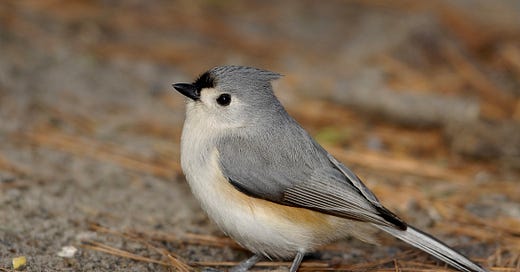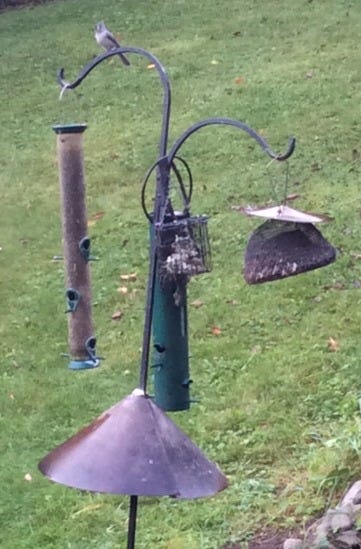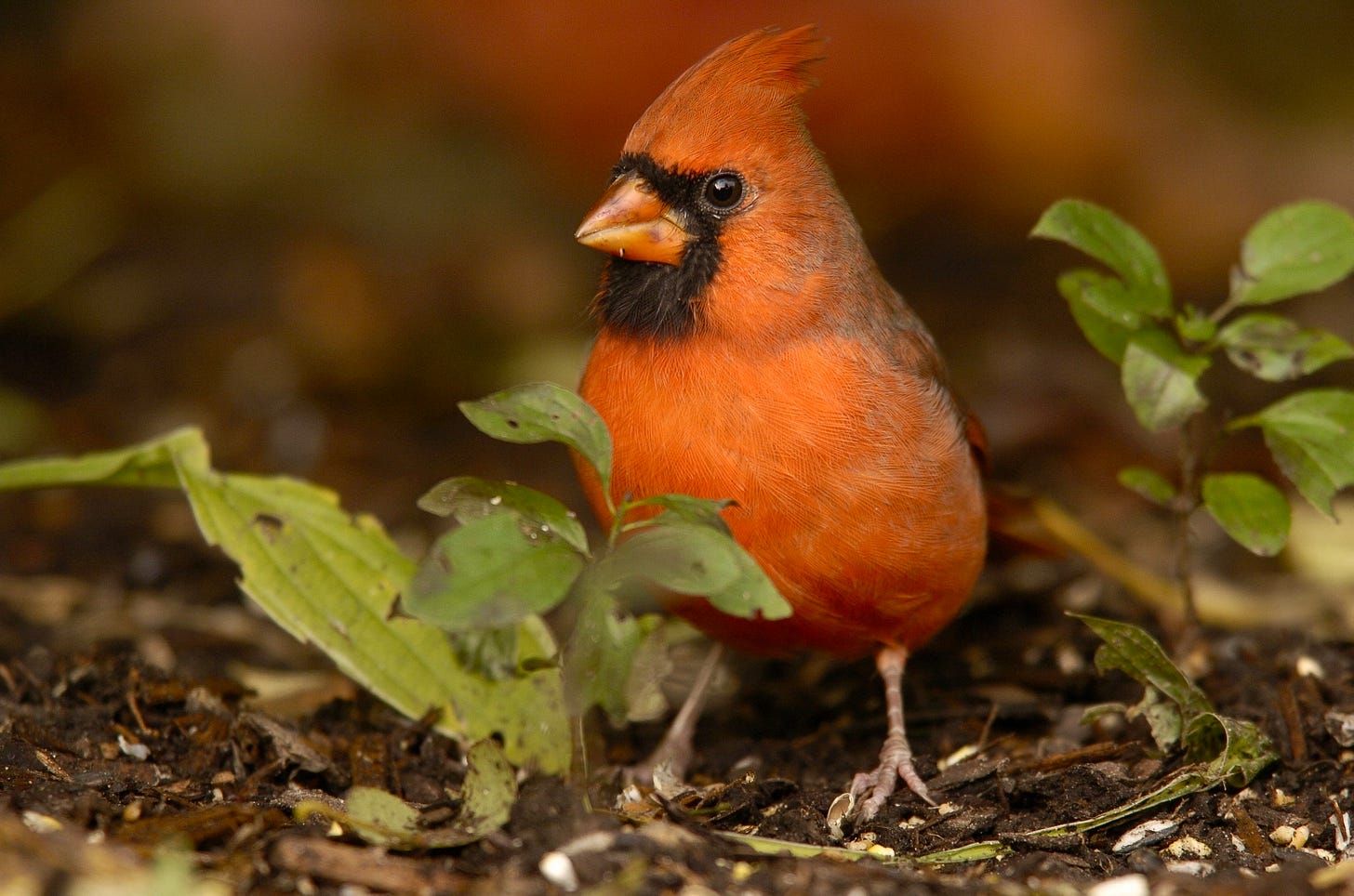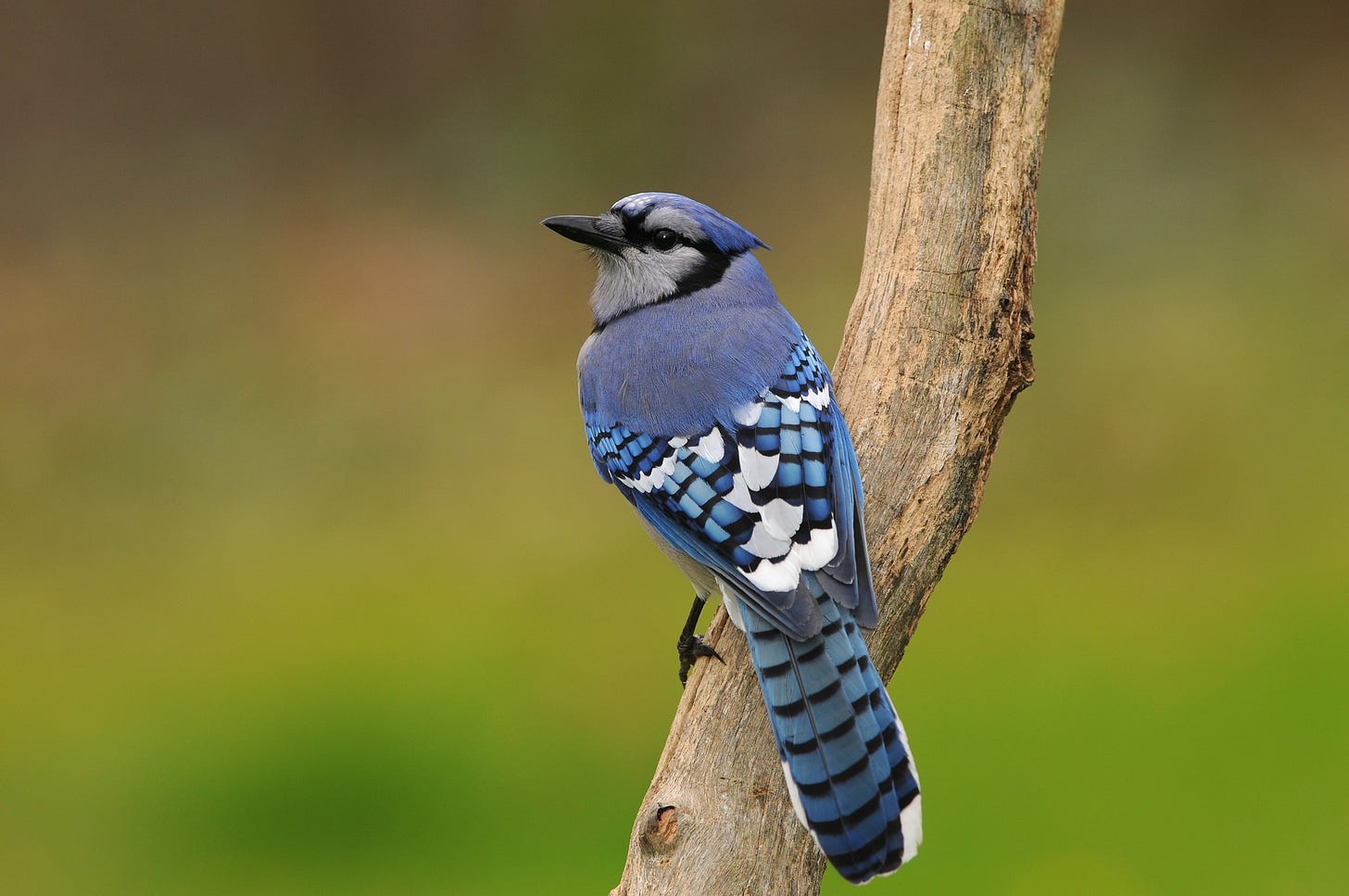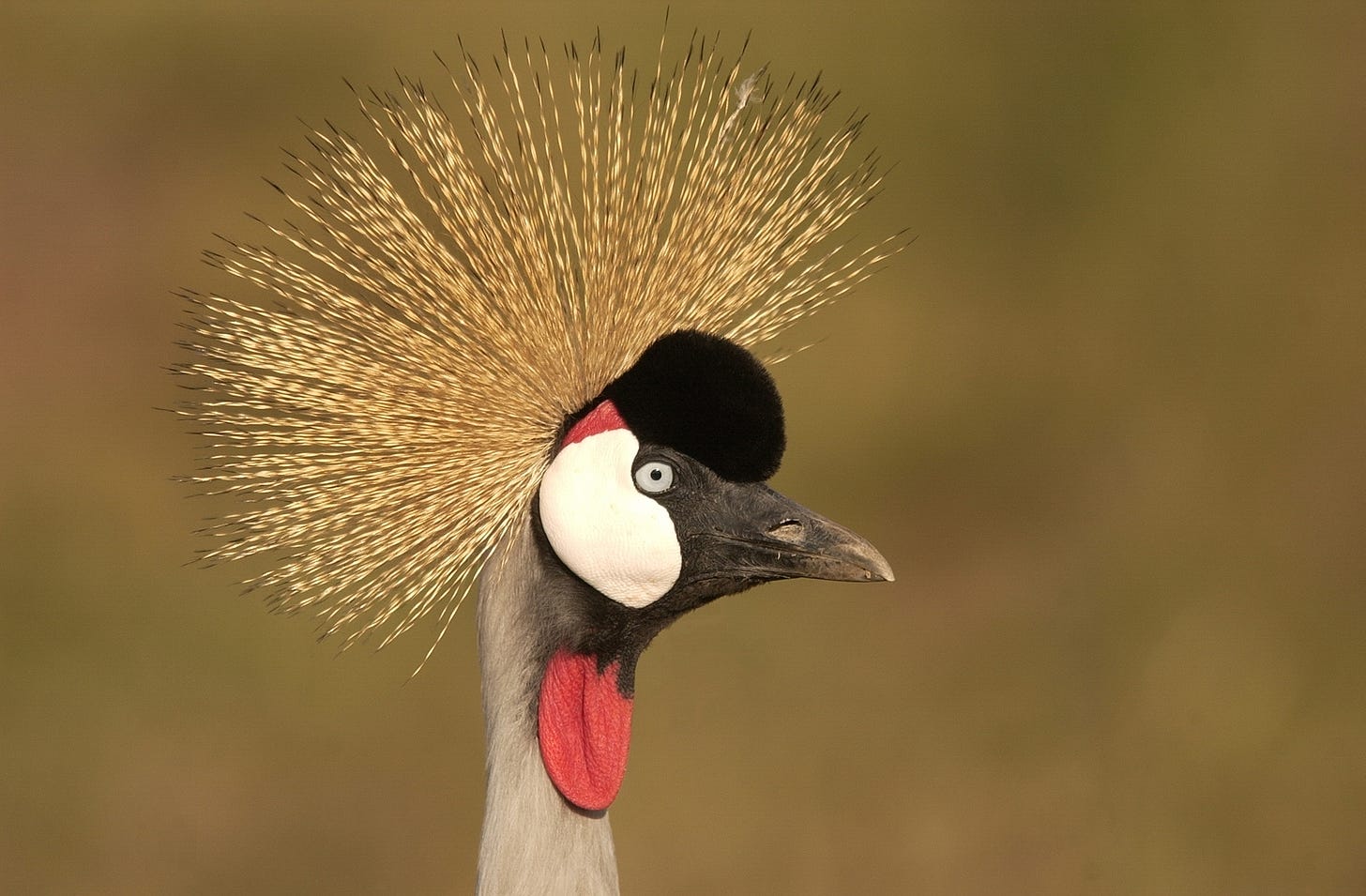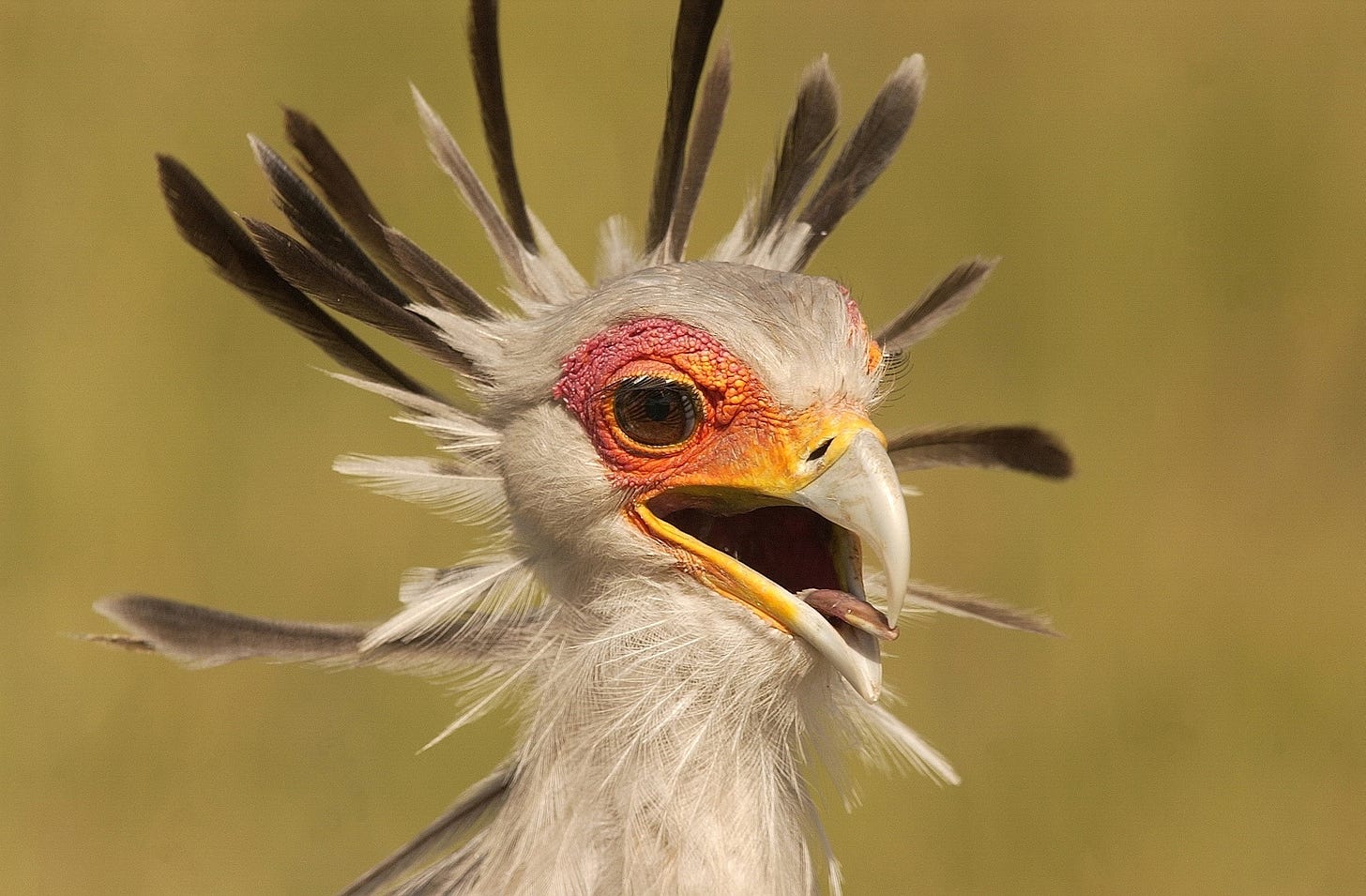If it wasn’t for bird feeders, would we ever even see a tufted titmouse? About the same size and personality of their close cousins, chickadees, they sweep in, grab a sunflower seed and dash back into the trees. Once safe and out of sight they hammer off the shell with a few cracks of their beak, swallow the seed or stash it in a crevice for the future, then, if we’re lucky, come for more. Free food for the bird; delight for anyone watching and waiting, hoping for another brief look.
Tufted titmice share lots of traits with chickadees, everyone’s favourite feeder visitors. Instead of a black cap they sport a pointy crest atop their heads, the same soft, mousey grey as most of their plumage. So they’re different but just as darling, with those big dark eyes.
Watching for tufted titmice is one of many delights I enjoy while visiting my sister in upper New York State. Jane and Charles keep their feeders going all year, and since titmice don’t migrate, preferring to occupy the same territory and cache food year-round, they’re regulars there. As they are throughout eastern North America south of the Great Lakes, given the right habitat.
Tree cavities to nest in, preferably old woodpecker holes in deciduous woods, are a prime requirement. For while black-capped chickadees can hollow out space in a punky birch stub to lay their eggs in, titmice can’t. Could that be a factor in why they aren’t spreading north with global warming quite as rapidly as red-bellied woodpeckers, cardinals and Carolina wrens? A mystery to ponder.
And another one to think about: the “tuft” advantage. Why do some birds grow elongated feathers on their head, while others don’t? All birds fluff up their plumage at will, to keep warm in chilly conditions, and at times of challenge or excitement—think “getting goosebumps.” But crested birds can take it to the extreme, expressing exactly how they feel during every “hair-raising” experience, fanning those head feathers like a deck of cards, or erecting them in an exclamation point.
Making them look bigger to a predator, or to a rival? Or more attractive to a potential mate? Any traits that birds find appealing in their partners get replicated during gene selection, shaping evolution, after all. And if you’ve got it, flaunt it, right? Male peacocks spend lots of time spreading their magnificent tails. Birds of paradise shake their colourful plumes, and even tiny kinglets flash their ruby or golden crowns in the height of spring fever. I love watching hooded merganser males in courtship display, showing off their weird white headdresses to any female paddling nearby.
But blue jays all look alike, male and female. And tufted titmice, too, so how does their courtship unfold? I’d like to follow a pair around in spring, before the leaves come out, and watch what they’re up to. Hear their loud “peter, peter, peter!” songs echo through the woods, and see what they’re doing with those brushy, tufted crests when they meet up.
Gotta phone my sister. Another visit is definitely in order.

